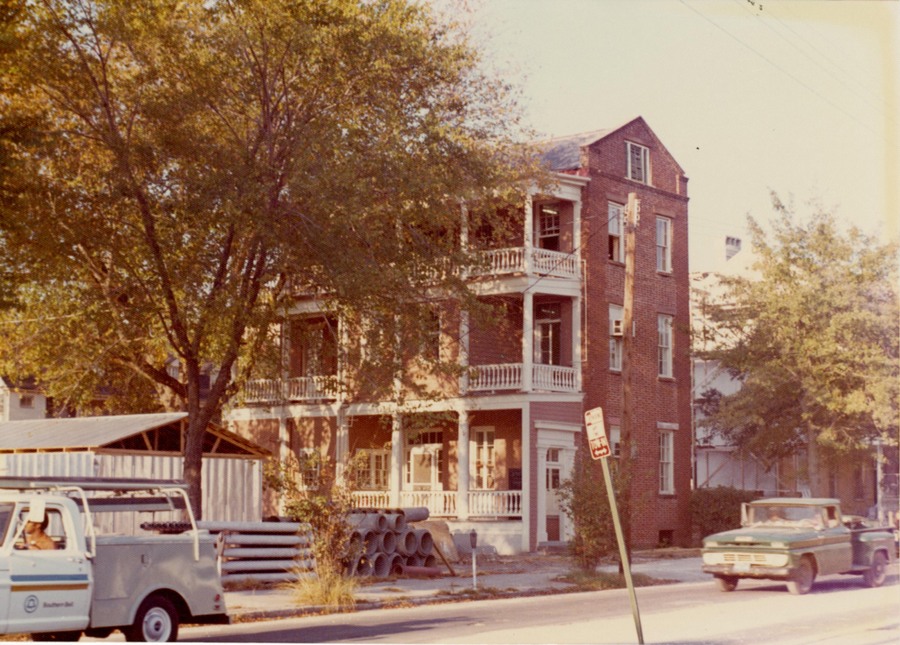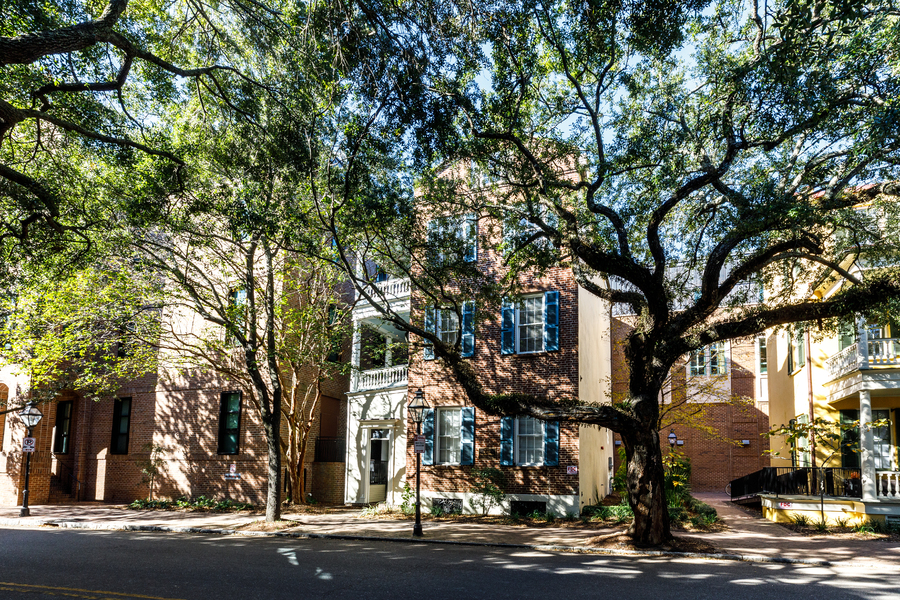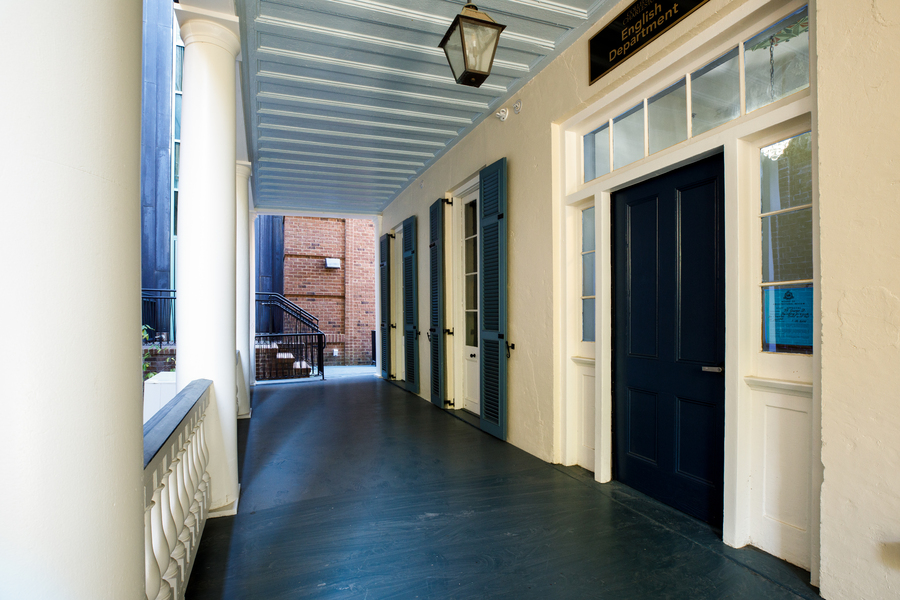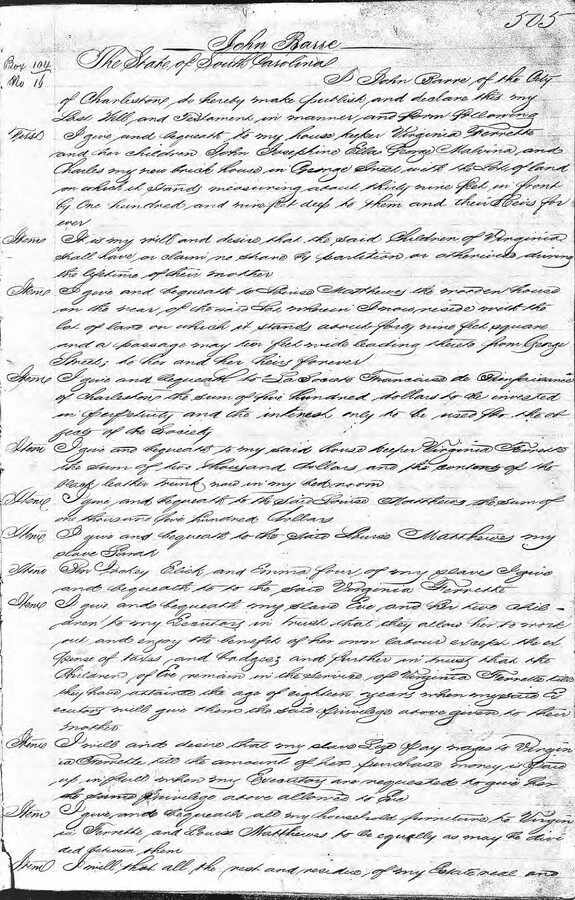Home of Virginia A. Ferrette, 74 George Street
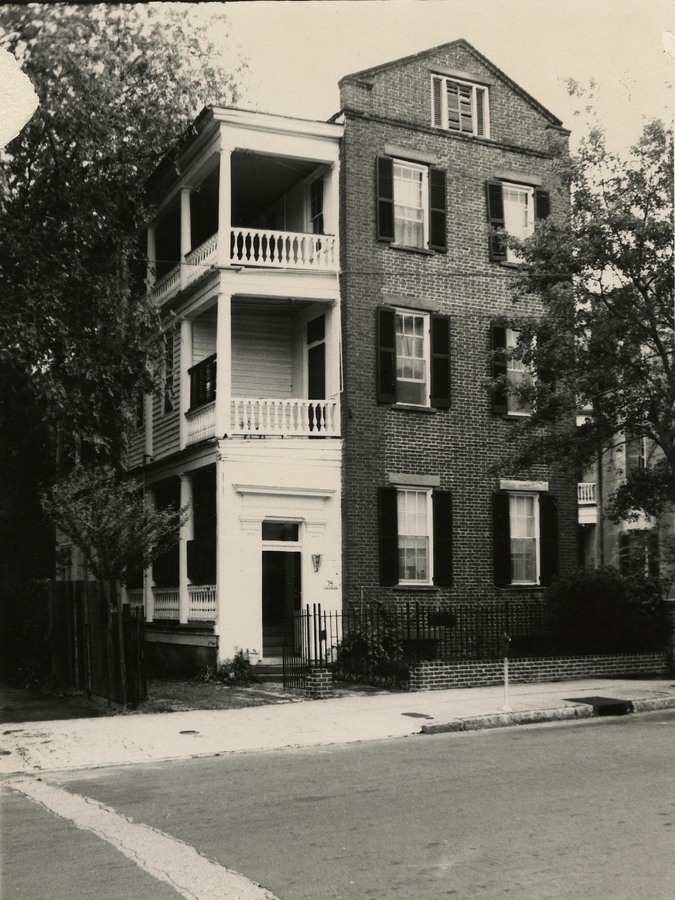
74 George Street is mere steps away from the Cistern Yard of the College of Charleston. It has been present for most of the College’s major milestones and events, and it now sits in the shadow of the Rita Liddy Hollings Science Center and the new Hollings Science Center Auditorium. Since 1837 this Charleston single house has embodied and reflected the many changes that have taken place in the history of the College, including the school’s connection to the institution of slavery and its legacy.
74 George Street has not always been 74 George--it was once 44 George Street, and before that it was a plot of land owned by the College of Charleston. In 1837 the College sold the property to Charles W. Crouch, who then built the house with his wife Eliza, but by 1843 they had lost the house to foreclosure. It was at this time that the house was sold to John Augustus Barre for $5,100.
John A. Barre, formerly of Bordeaux, France, was a successful wine merchant in the city of Charleston with a store at the corner of State and Market Streets. In addition to owning 44 George Street and his store, John Barre also possessed property in the form of enslaved peoples who lived at the residence with him. According to the 1850 Federal Census Slave Schedules, John Barre owned nine enslaved people, five women and four men, ranging in age from 8 years old to 43 years old. Unfortunately, no records exist on these nine individuals that shed light on their lives or give voice to their stories. However, there is one document that provides us with some of their names. Barre’s Last Will and Testament (1856) tells us the names of seven of the nine enslaved people, including Sarah, Ben, Jackey, Elick, Emma, Eve and her two unnamed children, and Lize. In his will, Barre gave Sarah to Louise Matthews who lived on the property of 44 George Street in a wooden house. Eve and her two children were conveyed to Barre’s executors with the stipulation that Eve be allowed to “work out and enjoy the benefit of her own labour except the expense of taxes and badges,” and that her children “remain in the service of Virginia Ferrette till they have attained the age of eighteen years when my said Executors will give them the said privilege above given to their mother.” Virginia Ferrette was also given possession of Ben, Jackey, Elick, and Emma, and the enslaved woman named Lize was ordered to “pay wages to Virginia Ferrette till the amount of her purchase money is paid up in full” so that she might enjoy the same privilege as Eve.
Virginia A. Ferrette was John Barre’s "Mulatto" housekeeper and the mother of his six children: John, Josephine, Ella, George, Malvina, and Charles. But during his lifetime they were not legally recognized as being his, and even in death Barre did not recognize his mixed-race children. In his will they are simply mentioned as being Virginia’s children when he bequeathed his property at 44 George Street to Virginia.
After the end of the Civil War in 1865, the home at 44 George Street and its residents bore witness to the sweeping changes brought by reunification, the legal end of slavery, and Reconstruction. The people who had once been enslaved in the home were now free. Ella Zenobia Ferrette Barre, one of John and Virginia’s daughters, would marry Henry Purvis in 1872. Purvis was one of the first African Americans elected to the State House of Representatives in 1868. In 1870 he became the Adjutant General for the state until 1877, at which time his political career came to an end. Reconstruction had concluded, marking the end to African American political rights. Three years later, in 1880, Virginia Ferrette and her children sold 44 George Street to Susan Walsh, ending an era for the home.
Under Susan Walsh’s ownership the home weathered the Great Earthquake of 1886 and the start of a new century. During the 20th century the home at 44 (now 74) George Street would witness even more change, and it would be home to many Charlestonians. Over the decades it transferred ownership multiple times and was even used as a boarding house and subdivided into apartments. 74 George’s history once again became directly tied to the College of Charleston in 1972 when the College purchased it from the Fogle family.
1972 was a significant year for the College; not only was it growing rapidly, but it also began the construction of Physicians Auditorium, and most importantly, the College had its first African American female graduates. Immediately after purchasing 74 George and neighboring 72 George, the College began to shift the home 23 feet to make room for the new auditorium and 72 George was rotated 90 degrees. 74 George once again underwent change during a period of growth for the college, prompting the home to be renovated in 2012.
74 George Street is still at the center of campus, now serving as English department offices, and it is a backdrop for the many day to day happenings of a college that is now made up of a diverse and colorful campus community that is actively making strides to become even more inclusive than it already is.
Images

